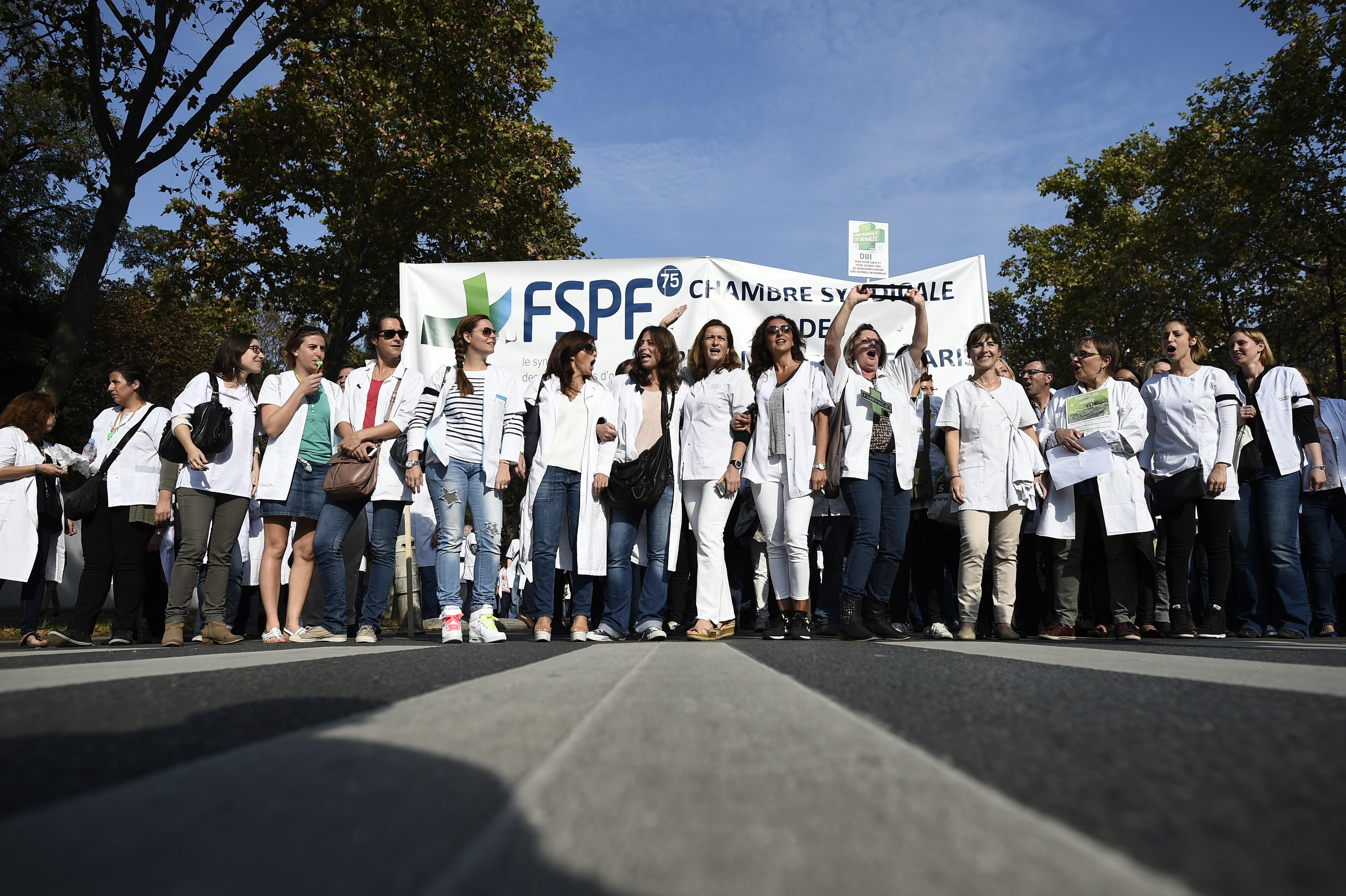In France, seeing a public protest is as commonplace as hearing La Marseillaise. Gallic students, airline pilots, and pensioners are all masters of striking. Now French scientists are taking their turn. On Sept. 26, some 3,000 university researchers and staff left their lab benches and set off from Montpellier, in the south of France, on what is said to be the biggest demonstration of its kind in the country in 10 years. The participants of “Sciences en Marche” are protesting a government tax scheme that they think takes away from public science funding, and what they perceive as decline for publically supported science in France. They are demanding that state-sponsored institutions create more research jobs.
Scientific activity in France has indeed been in a slump the past few years. According to the OECD, government spending on science in France has been flat for the past three years, just 2.3 percent (about $20 billion in 2011) of GDP a year—and this was after a big cut in 2009. French research intensity, a measure of the portion of economic output put towards scientific R&D, once exceeded the OECD average but now lags behind it. In June, a report issued by the National Committee of Scientific Research showed that spending in France is lower relative to many of its peers. Another report found the number of research jobs in the country shrinking, even as the number of applicants for these jobs is rising. In 2010, there were some 900 positions open for university researchers and lab technicians. In 2013, there were only about 500, and the numbers are expected to keep falling through 2016.
But France is not the only country to suffer curtailed government investment in R&D. Science funding in many rich countries are threatened in times of tight budgets and political divisions. In May, Australia’s government announced US $108 million in cuts to research over the next four years, a 16 percent reduction in state science funding. Nearly 1,000 boffins from CSIRO, the country’s main science body, staged protests. From 2009 to 2011, Britain saw the largest decrease in amount spent per researcher since the U.K. government began tracking the data in 1983 (the year Margaret Thatcher, a former chemist, retook No. 10 Downing Street). Concerned critics are so dismayed that the Guardian has created a section called “Science funding in crisis” to highlight the plight of public research in Britain.
Federal funding for science in the United States—though still a heftier portion of overall spending than in Europe—has been diminishing as well: $24 billion have disappeared since the 2010 sequester, leaving researchers fearing a coming brain drain. More worryingly, political intransigence threatens to curb funds for research in some of the most important fields, like environmental studies.
Germany is a rare outlier to general R&D glum in Europe—its research output has been rising for years, in part thanks to emphasis on government research spending. (Germany’s leader Angela Merkel, incidentally, used to be a physicist.) Since 2007, science spending there has increased by 70 percent. Likewise, China and South Korea have injected staggering doses of funds into R&D.
While “Sciences en Marche” gets underway, rallies in Spain and Italy are fomenting, too. Much of Europe is still reeling from its currency crisis. But debt-laden, stagnant Southern Europe will have a harder time producing healthy economies in the long run without innovation. If they aren’t careful, though, their leading lights may soon be trading Paris, Madrid, and Rome for Berlin, Beijing, or Seoul.
